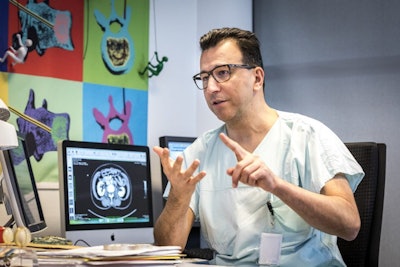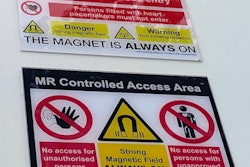
A 78-year-old man died after an x-ray system crashed during a cardiac catheterization procedure, according to reports in the Israeli media. The cause of the machine's crash is unknown, but it was most likely not a power failure.
The incident occurred on 7 December at Rabin Medical Center in Petah Tikva, Israel, and involved a Philips machine, stated articles published in the Jerusalem Post and the Times of Israel. An investigation is now underway, and the Health Ministry has reportedly ordered a halt to all catheterization procedures at the facility.
 The Rabin Medical Center has a capacity of 1,300 beds and is the largest transplant center in Israel. Photo courtesy of Wikimedia Commons.
The Rabin Medical Center has a capacity of 1,300 beds and is the largest transplant center in Israel. Photo courtesy of Wikimedia Commons.This is the first such incident that has taken place in the Rabin Medical Center, hospital management said in a statement. The x-ray system passed its routine maintenance test one week prior to the incident, and around 4,000 procedures are conducted every year using the system, noted the Jerusalem Post.
"The medical team is upset and shocked from the severe and rare incident, and is trying to digest and recover from it," read the statement, adding that the patient's family had been updated "with full transparency."
Moments of critical danger
When a breakdown occurs during a diagnostic examination, it is not usually a major problem, but when it occurs during an intervention, "you are suddenly blind," said Prof. Afshin Gangi, PhD, chair of radiology and nuclear medicine at Strasbourg University Hospital, France, and immediate past president of the Cardiovascular and Interventional Radiological Society of Europe.
"And if you are at a critical moment, it can be extremely delicate," he told AuntMinnieEurope.com. "It is very, very rare. In this case, maybe the machine broke down at a decisive moment, like stent opening or glue injection."
 Daily checks on machines are crucial, but something may still go wrong, says Prof. Afshin Gangi. Photo courtesy of Canon Medical Systems.
Daily checks on machines are crucial, but something may still go wrong, says Prof. Afshin Gangi. Photo courtesy of Canon Medical Systems.Regular maintenance of machines is vital to avoid this type of breakdown, according to Gangi. At Strasbourg, staff carry out a self-test every morning, when the machines are restarted.
"Despite this, you can never be sure," he noted. "It's like a car: Even a very well-maintained one may suddenly stop in the middle of a bend."
Failure of devices
Tables occasionally lock, the imaging goes off, or the C-arm won't move, Dr. Chris Hammond, a consultant vascular radiologist and the clinical director for radiology at Leeds Teaching Hospitals NHS Trust, U.K., told AuntMinnieEurope.com.
"Imaging devices do sometimes fail during a procedure, but rarely at a critical point, and usually a system reboot will restore imaging capacity. So all you lose is a few minutes. That is rarely dangerous," he added.
At Leeds, two interventional systems have an uninterruptible power supply, which consists of a large battery that allows them to continue working so that operators can get to a safe position. Regular maintenance contracts and error logging, medical physics checks, and the usual good governance are also essential, according to Hammond.
 A breakdown during an interventional procedure is such a rare occurrence that it's often not listed as a risk on registers. Photo courtesy of imageBROKER/Alamy Stock Photo.
A breakdown during an interventional procedure is such a rare occurrence that it's often not listed as a risk on registers. Photo courtesy of imageBROKER/Alamy Stock Photo."We do have business continuity plans, but by far the biggest risks in imaging departments are capacity versus demand (and delays to diagnosis) or operational risks due to IT or networking infrastructure failure," he said. "Direct patient harm due to device or system failure is very rare, thankfully."
Most modern systems have some kind of backup system with minimum functionality -- like booting a PC in "safe mode" -- to at least allow operators to recover the situation sufficiently to minimize the risk to the patient, even if there is an error that means all the system's functions are not working.
In case of a power failure, hospitals usually have a set of circuits supplying critical infrastructure (like scanners, angio machines, intensive care unit and operating theater equipment, some lifts, some air conditioning, etc.) that can be powered by a backup power supply, like a generator onsite.



















